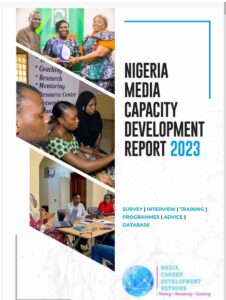The most popular use of AI tools in content creation is text and image generation but this is not the only thing it can be used for. This is probably why many journalists are still apprehensive of its use.
There are other functions that AI tools can offer journalists and especially newsrooms with a small team helping them to achieve more productivity with fewer resources.
Researching and Idea Generation
Even the most common generative AI can help in researching and content idea generation. Brainstorming topics to write on for dedicated international and national dates and commemorative celebrations.
Based on its training on available content on the internet, generative AI can offer insight into the popular coverage of a particular topic for journalists to key into the less-covered areas or offer a unique angle to their reportage.
Writing and editing assistance.
In an ideal newsroom, dedicated staff and cadres of professionals are assigned to different roles of reporting, writing, proofreading, editing, copy editing and others. This luxury is unavailable to many small newsrooms which may either delay their work or increase the work pressure on individuals who may have to take up several functions.
With the proper prompts, available editorial content can be edited for clarity, grammar checks and SEO compliance within seconds and waiting for minimal human input to make it ready for publishing. This not only saves time and effort but can be more efficient because the capability of the AI tool may even be able to cover grounds that human capacity may not. With the proper prompts, some AI tools can even be trained to edit, suggest headlines and generate leads and summaries in compliance with a particular house style.
READ ALSO: Need for more balanced reportage about AI by media in Nigeria
Audio Transcription and Content Generation:
Many AI tools for audio transcription are now sophisticated enough to cover the nuances in pronunciations like accents or local words or names. With the use of these tools journalists and newsrooms can increase their speed in working on reports from public speeches and interviews.
Some of these tools, like Otter.ai and Fireflies.ai, even allow users to query key topics from transcripts in real-time, generate quotable quotes and even audio soundbites for multimedia content. Journalists won’t need to wait for released text copies of speeches before publishing their stories.
Aside from making cross-platform publishing easy, newsrooms can also explore topics related to their niche audience from unique angles. A women or climate-focused platform won’t take too much time to generate news stories from angles relevant to their audience needs.
Audio AI tools can help generate voiceovers for multimedia content or even provide audio options for the audience to listen to instead of reading long-form reports. This increases audience engagement and even facilitates easier accessibility for those with challenges.
The offering of this Audio AI tool when reversed can also be used appropriately for broadcast or audiovisual mediums that might need to offer text transcripts or short summaries or their reports for readers.
Data Analysis and Storytelling:
Gone are the days when it would take several hours and a dedicated team of journalists and analysts to manually peruse pages of important documents like national and state budgets, and reports before they could come out with news stories for the people to read, else they would have to rely on press briefings and announcement of government officials in reporting consequential documents for the masses.
In this age of advances in data analysis technology and even the advent of AI, it would only take a moment for meaningful insights to be gleaned from even a very large document for news reports.
With simple prompts and needed know-how AI tools for Data Analysis like ClaudeAI, Google’s Pinpoint and NubiaAI developed in Nigeria can help understand the content of large documents, analyse it and generate news stories and even visualisations for the audience to understand.
Fact-checking and Verification:
Here in Nigeria alone, about three AI-powered fact-checking tools and platforms have been developed for the use of people and journalists. FactcheckAfrica’s MyAIFactchecker, ChatVE and Dubawa’s Fact-checking AI Chatbot and Audio platform can help small newsrooms who don’t have in-house fact-checker to verify information and fact-check claims.
While we advocate for the adoption of AI tools in newsrooms’ workflow to increase productivity and efficiency it is important to note that these are tools to aid in work and they have their fall shorts that journalists need to guard against.
As already reported in our article about how AI bias and the dangers of an unbalanced reportage of AI journalists and newsrooms still need to apply due diligence and ethical consideration in their use of AI tools and avoid over-reliance which undermines the quality of journalism.






